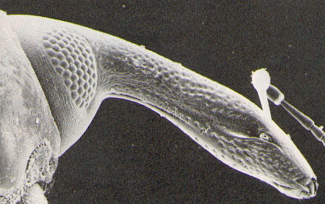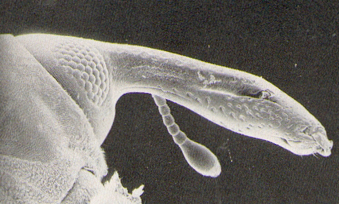In biological control programmes it is important to use the most accurate names for the genus and species of agents, if names are available. If the species is undescribed or cannot be identified, it should be given a convenient reference number. Avoid referring to an unidentified organism as species near so-and-so in documents, since it is common practice for the name of the related species to be incorrectly applied to the unidentified taxon in the literature at a later date.


The importance of accurate identification is
demonstrated in the two very similar salvinia
weevils: Cyrtobagous singularis (left) and Cyrtobagous salviniae
(right). The former
failed to control the weed while the latter has been highly successful.
The genus (first letter in capital) and species (first letter in lower case) are always written in
italics or underlined. Subgenera or species groups are sometimes used in classification of closely related species but their use is not necessary for biological control workers. When referring to a species in a document, the genus name may be abbreviated to the first letter followed by a full stop after its first usage in full, provided no other taxon referred to in the document can be confused with it (i.e. by having the same species name).
For rules relating to the application and use of scientific names in taxonomy, refer to the International Code of Zoological Nomenclature
(Ride
et al. 1985). It is updated from time to time by the International Commission on Zoological
Nomenclature.
The following pages address the most common questions relating to
insect taxonomy raised by workers in biological control.
[ Back ] [ Next ]

